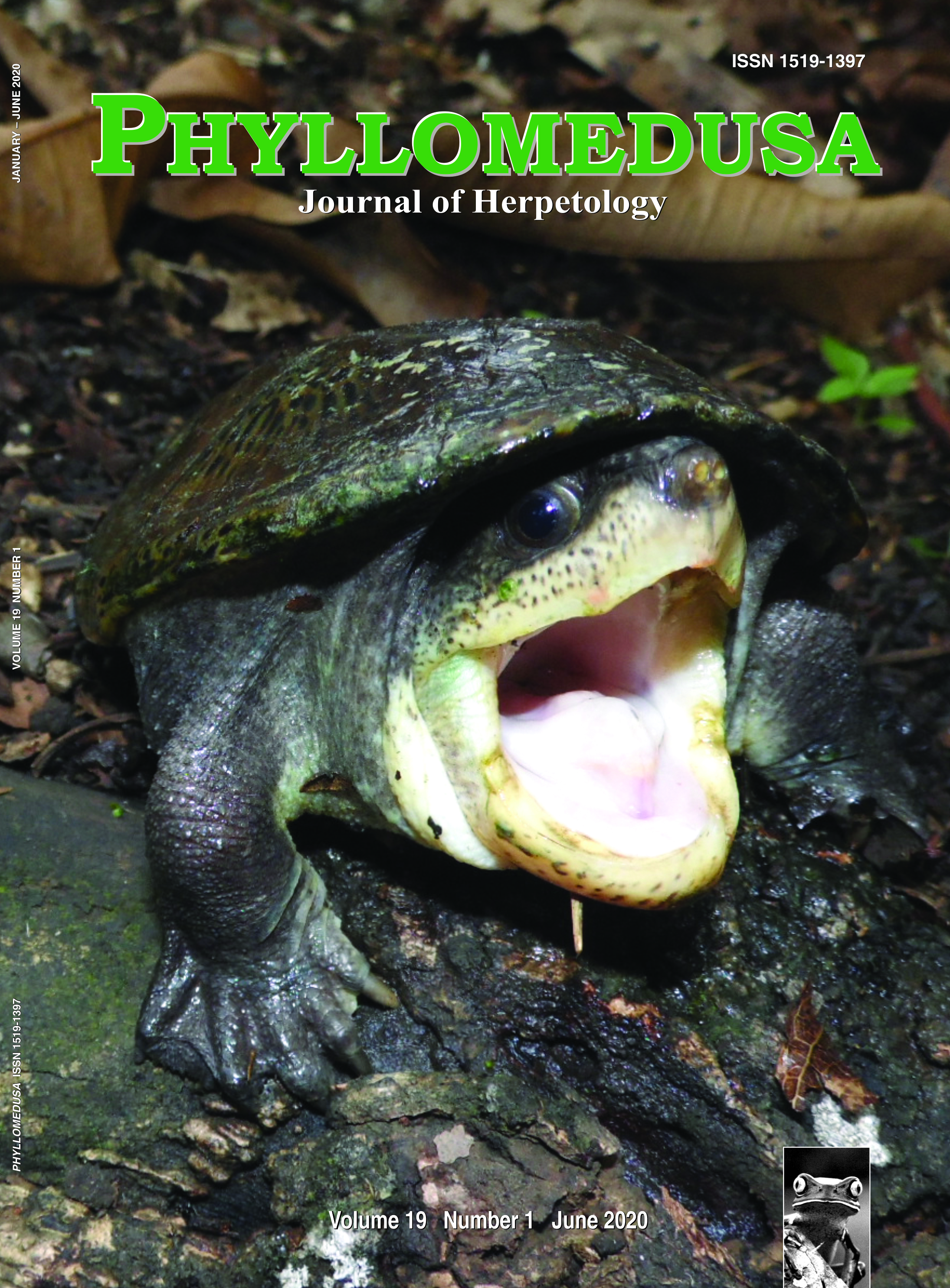A comparative acoustic analysis of species of Vitreorana (Anura: Centrolenidae) from the Brazilian Atlantic Forest and Cerrado, with a description of the call of V. baliomma and insights into the taxonomic status of Cerrado populations
DOI:
https://doi.org/10.11606/issn.2316-9079.v19i1p35-47Keywords:
Advertisement call, character displacement, sympatry, syntopy, vocal repertoire, Vitreorana baliomma, Vitreorana eurygnatha, Vitreorana franciscanaAbstract
A comparative acoustic analysis of species of Vitreorana (Anura: Centrolenidae) from the Brazilian Atlantic Forest and Cerrado, with a description of the call of V. baliomma and insights into the taxonomic status of Cerrado populations. Advertisement calls are the primary signaling strategy of mating in most anurans. Examining major patterns within and across frog taxa may help to delimit species and understand acoustic communication systems. Herein, the vocalization of Vitreorana baliomma is described and new acoustic descriptions are provided for V. franciscana and V. eurygnatha. Calls of syntopic/sympatric or allopatric populations were compared. The vocalization of V. baliomma is composed of two call types—A and B, with Call A being the advertisement call. The vocalization of V. franciscana is composed of only one call type (Call A), emitted isolated or in series. The vocalization of V. eurygnatha has two types of calls; Call A is similar among Cerrado populations, whereas an Atlantic Forest population has a distinct Call A pattern. The calls of each of these species of the present study is pulsed; however, the calls differ in call duration, pulse organization, or pulse duration, and these differences seem to reflect the allopatric or sympatric/syntopic occurrences of populations. The unique call pattern of the Atlantic Forest population of V. eurygnatha may represent the advertisement call of the nominal species, and the distinct call of the Cerrado population may indicate cryptic diversity in the species.
Downloads
Downloads
Published
Issue
Section
License
Copyright (c) 2020 ESALQ-USP

This work is licensed under a Creative Commons Attribution-NonCommercial-NoDerivatives 4.0 International License.
All material originally published in Phyllomedusa belongs to Escola Superior de Agricultura Luiz de Queiroz - Universidade de São Paulo. All contents are under a license of Creative Commons BY-NC-ND.


 Impact Factor (JCR): 0.600
Impact Factor (JCR): 0.600 CiteScore: 1.0
CiteScore: 1.0